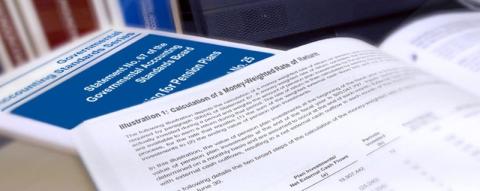In April 2013, the Governmental Accounting Standards Board (GASB) issued Statement No. 70: “Accounting and Financial Reporting for Nonexchange Financial Guarantees.” This statement will bring some transparency. It may help enhance the comparability of financial statements. But it won’t be overnight, and there are some nettlesome issues underneath.
For example, GASB #70 requires a government extending a guarantee to recognize a liability when it is “more likely than not” that it will be required to make a payment on the guarantee. This standard has come under some criticism for ambiguity and the discretion it can provide. It may also lead to under-reporting of material exposures.
When creating this new standard, the GASB received 27 comment letters. Many of these, including letters from the American Institute of CPAs (AICPA) and the National Association of State Auditors (NASACT), questioned the “more likely than not” criteria. Some critics suggest the term be replaced with “probable,” which has traditionally been used for similar contingent liabilities. Of the seven members of the GASB, one dissented from the issuance of the statement because of this issue.
The receiver of a guarantee is required to report a liability for the related outstanding debt. For the government issuing the guarantee, once it is “more likely than not” that it will be required to make a payment, the guarantor is required to report a liability as well. These requirements apply even when one of the parties is a component unit of the other. This begs a question -- won’t the liability be double-counted if reported by both the guarantor and guaranteed governments? Some commenters on the exposure draft shared this concern. The new standard allows the issuer of the guaranteed obligation to recognize a receivable equal to the amount of the liability.
GASB Statement No. 62, issued in December 2010, also made a provision for disclosure of the nature and amount of financial guarantees. However, this statement hasn’t been implemented yet, because it is effective for all financial statements beginning after December 15, 2011. Most states have a fiscal year end other than December (46 states have a fiscal year-end June 30), so they won’t be required to follow Statement No. 62 until their fiscal 2013 comprehensive annual financial reports (CAFRs) are released. And the new Statement No. 70 disclosures won’t be required until the 2014 CAFRs are released – most of them in 2015!
Where do governments stand, today, in terms of their exposure on guarantees for one another? We just don’t know. Contingent liabilities like these can make it very difficult to accurately understand a government’s total liabilities. Their ongoing exclusion from financial statements should be a significant concern.
The new GASB standards may help. But we’ll have to wait and see. In the meanwhile, local governments in precarious positions can still pose a threat to citizens in other governments, just under the table, in undisclosed agreements.
